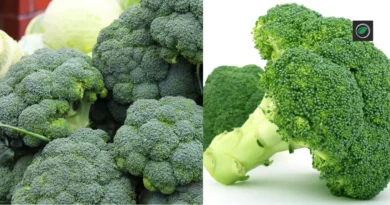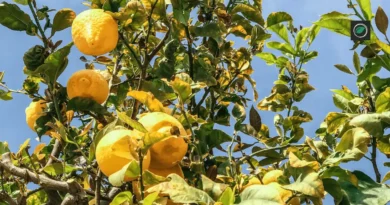How To Avoid OverWatering Tomato Plants In Pots
A Simple Guide to Combat Overwatering Tomato Plants in Pots
Tomatoes are a popular vegetable used in our daily life. Because of their both tart and sweet flavor, tomatoes are a common ingredient in many recipes. Proper watering of tomato plants is important if you want to grow a large crop of healthy tomatoes.
In order to maintain tomato plant’s healthy growth and productivity, you can learn everything you need to know about watering tomato plants in this article. Below are the steps to avoid overwatering tomato plants in pots:
- Choosing the Right Watering Method
- Schedule for Watering At Different Stages
- Watering Techniques for Tomato Plants
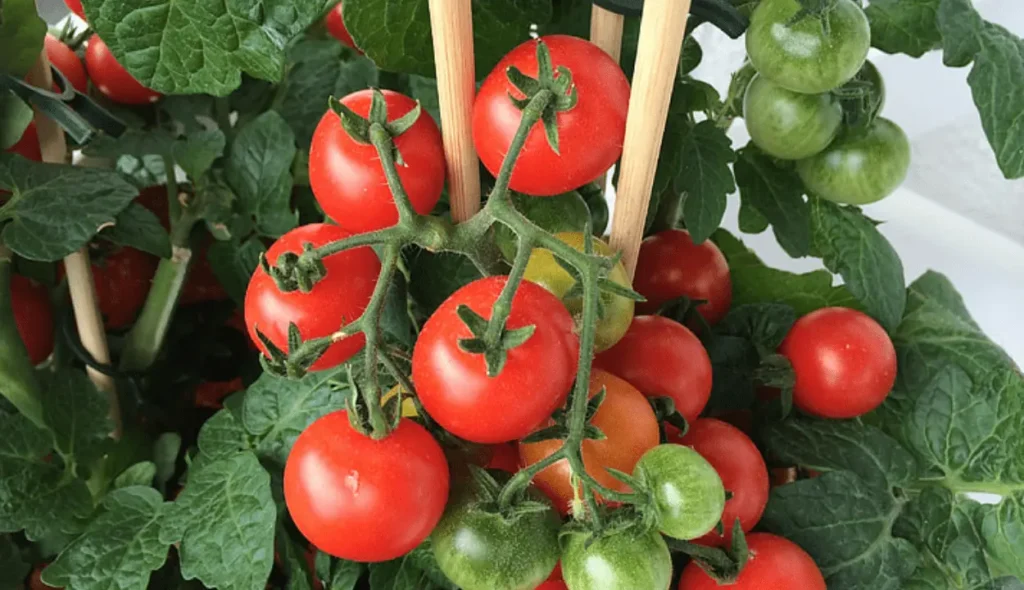
Table of Contents
Understanding Tomato Watering Needs
The Benefits of Proper Watering
Water is necessary for all living things. The benefits of the watering role include improving nutrient absorption and supporting important processes like photosynthesis. The transfer of nutrients from the roots to the rest of the plant depends on watering. Which promotes the overall health of plants.
Recognize Signs of Under- and OverWatering Tomato Plants In Pots
It is important that you only water tomato plants when the soil is dry or has less moisture and do not over-water when the soil already has enough moisture for its growth. When tomato plants receive less water, fruit begins to fall off and leaves can start to die or drop. On the other hand, plants that have been overwatered can show symptoms like mold growth, root rot, and dying leaves. Keeping the right watering balance is essential for the development of tomatoes.
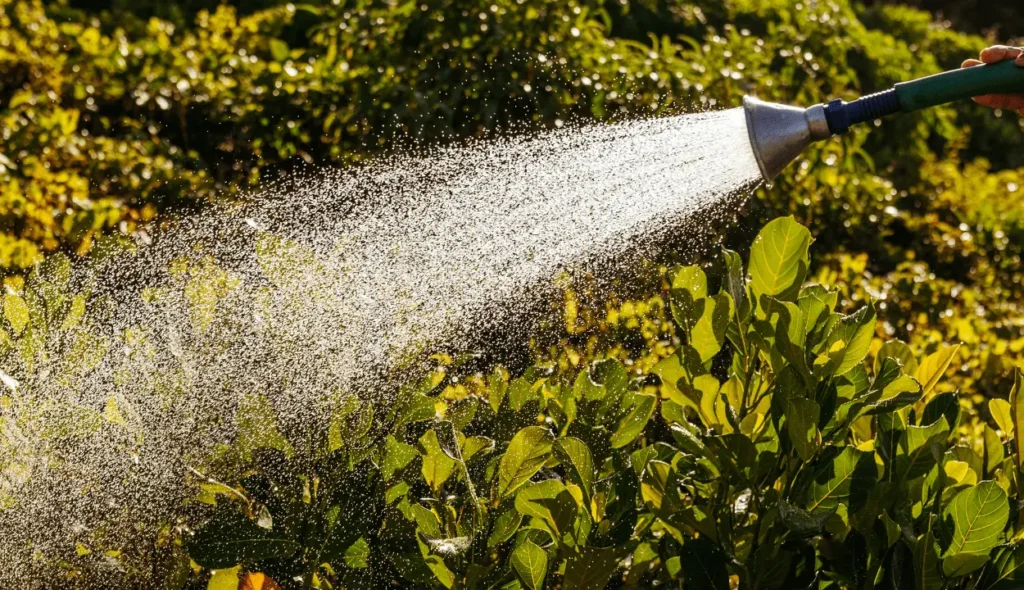
Best Practices To Avoid OverWatering Tomato Plants In Pots
Choosing the Right Watering Method
The best watering technique for tomato plants could vary depending on the environment, soil type, and plant size. Providing water through a Drip irrigation system, hoses, and hand watering are common three methods. There are advantages and disadvantages to each watering technique.
Schedule for Watering At Different Stages
As tomato plants progress through various growth stages, their watering needs change. For example, compared to mature plants, seedlings require more sensitive watering. Creating a suitable watering schedule for each growth stage ensures optimal plant development and minimizes the risk of water-related issues.
Watering Techniques for Tomato Plants
Tomato plants that are grown in containers have different watering requirements than those in the ground. By following the necessary methods you can avoid overwatering tomato plants in pots, such as bottom watering and selecting the appropriate container, waterlogging and nutrient leaching can be prevented.
Water Quality and Temperature Considerations
The Role of Water Quality in Plant Health
The water quality plays an important role in nourishing tomato plants. The general health and capacity to produce fruit of tomato plants can be affected by the quality of the water. The growth of tomato plants can affected by various factors such as PH levels, mineral content, and the presence of contaminants in the water.
For Tomatoes, the Best Water Temperature
Tomatoes prefer water that is neither too cold nor too hot. Hot temperatures can shock plants and prevent them from absorbing nutrients. Maintaining the right water temperature is vital for their well-being.
Watering Tips for Different Weather Conditions
Watering in Hot and Dry Weather
When the weather is hot and dry, dehydration and excessive heat are more likely to impact tomato plants. In hot weather protect tomato plants from the direct sunlight. Tomato plants need care in hot weather. The right time to water tomato plants is in the evening or early morning.
Watering During Rainy Seasons
The health of tomato plants might be affected by issues like root rot during the wet seasons when there is a lot of rain. You should only water if you see your soil dry otherwise do not water your plants in rainy seasons.
Using Drip Irrigation Systems
Advantages of Drip Irrigation
A drip irrigation system is a method that can save water and provide water to tomato plant’s roots directly. The drip irrigation system reduces water wastage which reduces the risk of fungal diseases. A drip irrigation system also prevents from over watering tomato plants in pots.
Installing and Using Drip Irrigation for Tomatoes
While installing a drip irrigation system for tomato plants planning is important and use the good quality system for your garden. Healthy plants and maximum yield are guaranteed by regular maintenance.
Mulching and Its Impact on Water Retention
Benefits of Mulching
Mulching has a number of benefits when you use it in your garden. It helps conserve moisture in the soil, prevents weed growth, regulates soil temperature, and improves overall plant health.
Choosing the Right Mulch for Tomato Plants
The right mulch should be chosen depending on the climate, soil type, and availability. Both organic and inorganic mulches give advantages, and making the right choice is essential to maximizing those advantages.
Innovative Watering Methods
- Self-Watering Systems
For watering tomato plants, self-watering systems are helpful and efficient since they deliver water directly to the roots as required. Gardeners who have busy schedules or are new to gardening will find them especially helpful.
- Watering Globes and Spikes
Practical items like watering globes and spikes that release water gently keep tomato plants constantly hydrated. When hand watering may not be possible, they can be especially useful.
Companion Planting to Conserve Water
- Plants That Help Retain Soil Moisture
Companion planting with certain vegetables and herbs can help retain soil moisture, benefiting tomato plants and reducing overall water usage.
- Combinations to Avoid
Some plant combinations that drain the tomato plant’s nutrients can have an impact on the growth of tomatoes. Such combinations must be avoided in order to safeguard the growth and well-being of tomato plants.
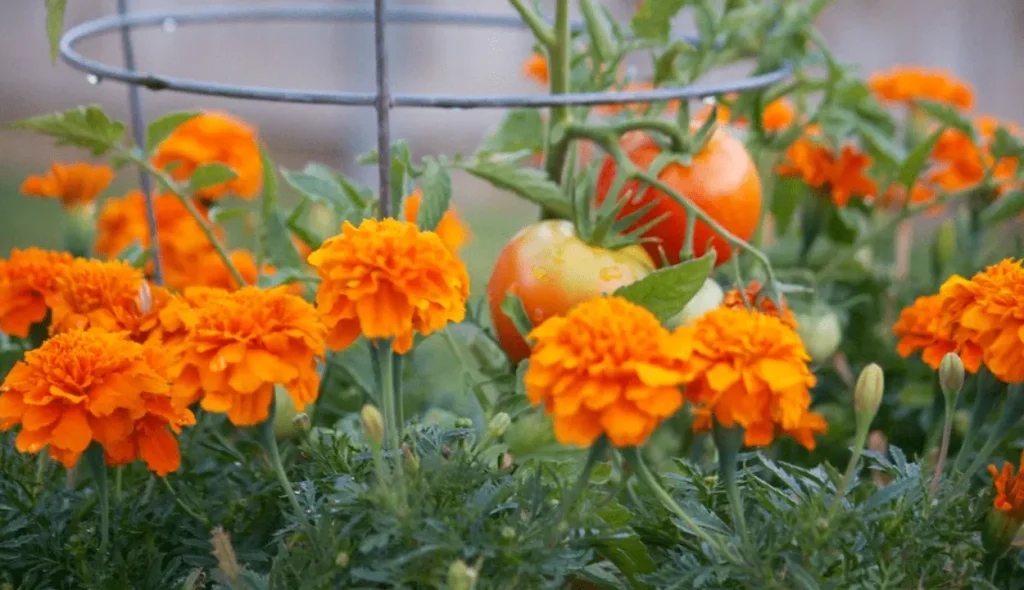
Dealing with Watering Challenges
Watering in Containers with Poor Drainage
Container-grown tomatoes require adequate drainage to avoid overwatering tomato plants in pots. Which can cause problems such as waterlogged roots.
Addressing Watering Issues in the Garden
Overwatering tomato plants in pots is a common challenge in gardens. It is important to find and fix the common watering issues for the health of tomato plants.
Signs of OverWatering Tomato Plants In Pots
- Wilting and Leaf Curling
Wilting and leaf curling can be signs of both under-watering and overwatering. Understanding their causes helps in determining the appropriate course of action.
- Root Rot and Mold Growth
In tomato plants, overwatering can cause root rot and mold growth. With proper drainage and watering methods, the development of mold and root rot can be prevented.
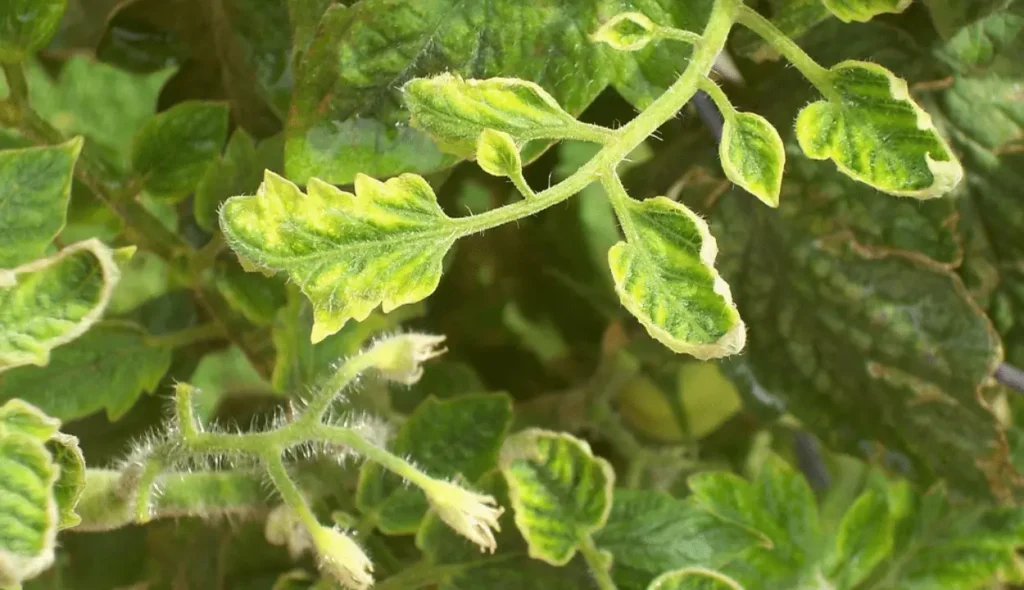
Tomato Varieties and Watering Needs
Determinate vs. Indeterminate Varieties
Different tomato varieties have unique growth habits that influence their watering requirements. Understanding the differences between determinate and indeterminate varieties helps in adjusting watering practices accordingly.
Adjusting Watering for Different Tomatoes
Customizing watering practices for each tomato variety ensures that the specific needs of different plants are met, resulting in healthier and more productive tomato plants.
Conclusion
Successful tomato cultivation depends on proper watering strategies. In this article, you can learn to grow healthy tomato plants and harvest plenty of tomatoes by learning the right watering requirements for tomato plants. It is important to choose the right watering methods for the successful growth of tomato plants and avoid overwatering tomato plants in pots.
FAQs
How frequently do I need to water my tomato plants?
Watering tomato plants can depend on factors, such as weather in your area, soil type, and plant size. Tomato plants need consistent moisture for healthy growth. Tomato plants should not be overwatered.
Can I irrigate my tomato plants with recycled water?
Yes, you can use recycled water however, it’s important to make sure that the water is toxic-free and safe for watering tomato plants. Recycled water use is good for environment.
Do huge tomato gardens benefit from self-watering systems?
Large gardens benefit greatly from self-watering systems. For proper and equal water distribution, self-watering systems must be properly built and maintained.
When should tomatoes be watered during the day?
To water tomato plants early morning and evening are the best time. Do not water the tomato plants in the afternoon to prevent water evaporation and scorching.
How can I keep my tomato plants from having root rot?
Make sure the soil has good drainage and refrains from overwatering to prevent root rot. Properly spaced plants and using well-draining containers can also help prevent overwatering tomato plants in pots.


